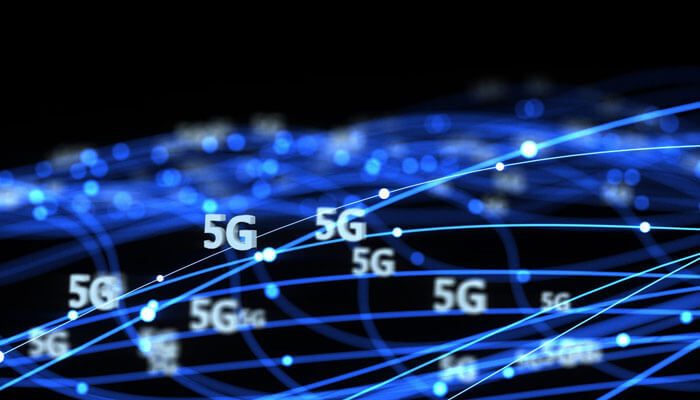What does 5G stand for? Is it a superhero? The fifth generation of cell phone technology? An attachment for your foxtail hat? If you’ve ever wondered what 5G is, you’re not alone. Many people have heard about 5G, but few understand its implications or know how it works.
Today, wireless users have access to a number of different mobile networking options that are commonly referred to as 4G. Each of these 4G technologies has its own set of benefits and drawbacks. However, it’s not enough for carriers to simply continue adding new versions of the same thing.
The industry needs a technology that can streamline the user experience and support constantly growing bandwidth demands. To do this, wireless providers are implementing 5G technology in their networks. Many users might mistakenly think that 5G is just another version of the standard 4G LTE network.
After all, both have the same set of three-digit naming conventions. Unfortunately, the naming convention is about the only thing these two have in common—and that’s why it’s important to understand what 5G really is.
What is 5G?
First, let’s start with a brief definition of 5G. 5G is a new wireless communication standard that’s designed to support high-speed, low-latency connections. It will be able to carry much more data at much lower latencies than what is currently possible with existing 4G network standards.
It will also be far more efficient and scalable than previous technologies, which means that it will be able to support more devices per network, and more networks overall. That’s why many carriers are working toward implementing 5G in their networks as quickly as possible.
5G is considered an evolution of the 4G LTE network standard. It is a major technological leap forward that uses a variety of new and innovative technologies, including wide-coverage high-frequency spectrum, large numbers of small low-power base stations, intelligent network automation, and massive MIMO.
Better connection results from better networks. If you like to bet, you might take pleasure in watching smooth sports streaming, check this link: https://pari-match.in/blog/en/cricket-west-indies-vs-bangladesh
5G Technology Basics
There are two main ways in which 5G technology differs from 4G LTE. The first is in the frequency bands that are used to transmit data. 4G LTE networks operate in the low-frequency range between 800 MHz and 2,600 MHz. 5G, on the other hand, uses a high-frequency spectrum between 28 GHz and 80 GHz. This allows for extremely high data transmission speeds, but it also means that only large city-sized pockets of 5G coverage are possible.
Many 5G networks are expected to rely on massive MIMO technology to expand their coverage areas. The second major difference between 5G technology and 4G LTE is the number of base stations. 4G LTE networks use large numbers of high-powered base stations on the order of hundreds per city.
In comparison, 5G networks will use dramatically smaller numbers of smaller base stations on the order of thousands per city. This is expected to improve the efficiency of the network and significantly reduce costs.
How Does 5G Work?
5G networks will use different frequency bands, infrastructure, and methods of data transmission than current LTE networks. They will also use different technology standards, including new versions of LTE, 802.11, 802.16, and 802.20. For example, 5G networks will use high-frequency spectrum in the 28 GHz and 39 GHz bands.
This is much higher than the 1,800 MHz to 2,600 MHz bands used today, which allows for much faster data transmission. However, it also means that a much denser network infrastructure is needed to cover a given area. The network infrastructure of a 5G network will include hundreds of thousands of smaller, cheaper, low-power “micro-cells” in place of the large towers used in 4G networks. These micro-cells will be connected to indoor base stations that will then connect to backend networks. This entire infrastructure will be controlled using artificial intelligence and automation software.
Benefits of 5G Technology
There are a number of key benefits to 5G technology that makes it such a critical development for the future of the wireless industry.
One major advantage is an increase in network capacity. This means that 5G networks will be capable of handling more devices and data at once than 4G LTE networks. It will also be able to provide faster connection speeds, particularly for high-bandwidth services like virtual reality, augmented reality, and online gaming.
There will also be greater network security due to lower latency, higher frequency bands, and a more centralized network structure. A centralized network structure means that there are fewer connections that hackers can infiltrate, and lower latency means that any attacks will be noticed and dealt with much more quickly
Limitations of 5G Technology
Although 5G is a very promising technology, it also comes with a few major limitations. The first is the fact that it operates at much higher frequencies than 4G LTE. This can cause interference with other technologies that are also operating at these frequencies, such as satellite communications and medical devices.
The second is that it is expected to require much denser infrastructure, which will make it more expensive to install and maintain. Finally, it is not backward compatible with existing 4G LTE networks.
Is 5G Really Coming?
Yes! It’s important to note that 5G technology is not something that will appear in the next few years. In fact, it’s still very much in the development stage. Many wireless providers are currently testing and implementing 5G technology in their networks, but even the first commercial 5G services are not expected to launch sooner. The main thing to remember is that 5G is not another version of the 4G LTE network. It is an entirely new technology that is based on different technology standards and uses a different spectrum than LTE.
Conclusion
5G, or the fifth generation of mobile connectivity, is the upcoming standard for wireless communication. It will supersede current 4G LTE technology, offering faster wireless data transfer speeds to support emerging Internet of Things (IoT) applications, as well as new services such as video and virtual reality. 5G will also support shorter response times so that network responses are almost instant — no more waiting for a page to load or an app to respond.
The future of the wireless industry looks promising as 5G technology continues to develop. Wireless providers will be able to offer faster and more reliable connections to support the growing use of mobile devices. They will also be able to expand their networks to cover more areas and support more devices than ever before. The only thing users need to remember is that 5G is not something that will happen in the near future. It’s something that is happening right now, albeit behind the scenes.




